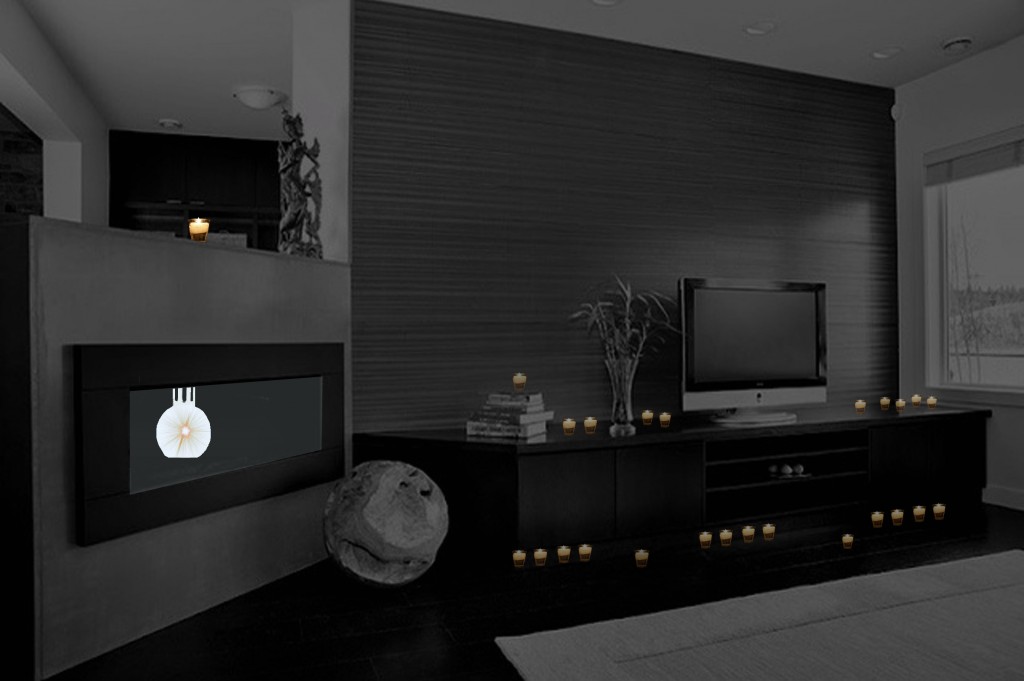Introduction
ø
“For the Love of God and His Prophet: Religion, Literature, and Arts in Muslim Cultures” have proven to be quite a fascinating course. With discussions of the Qur’an and its message, artistic expressions found throughout contemporary and historical Muslim communities, and differences in practice and ideology in different Muslim cultures around the globe, this course has given an expansive and inclusive view of Islam and of those who identify as followers of that faith. In light of the diversity of perspectives and experiences I was exposed to in this course, I sought to create a portfolio representative of the diversity I have witnessed. Specifically, my blog posts are each reflective of two of this course’s major themes: the cultural studies approach and the contemporaneity of Islam. In the following paragraphs, I will explain the ways in which each of my blog posts intends to relate to those themes.
Post #1: Mosque Mosaic
My first blog post is a tiled mosaic, piecing together the images of 160 mosques found all around the globe. This was my premier foray into an expression of the cultural studies approach and of the contemporaneity of Islam. According to Professor Asani, the cultural studies approach to analyzing religion considers religion to be a phenomenon that is deeply embedded in all dimensions and contexts of the human experience. It understands that religious ideology and, particularly, religious practice are heavily influenced by the historical, political, social, economic, and artistic landscapes of the communit(ies) in which that religion is based. In my mosaic, I sought to demonstrate this by showing the scores of ways that mosques can be designed and highlighting the fact that there is no one way to design a mosque just as there is no one way to practice Islam. Relatedly, the 160 mosques of my mosaic span the temporal scope as well, with some mosques hundreds of years old and others built within recent decades. The teachings of Islam have been around for approximately 1500 years, but despite that, the religion still plays a large role in the contemporary global society. As times have changed, some Muslim communities have adapted and evolved as well, and my mosaic seeks to illustrate that some of that evolution has occurred architecturally.
Post #2: Light of Allah
In my second illustration, I sought to focus the contemporaneity of Islam more so than the cultural studies approach. Inspired by Qur’an verse 24:35, this illustration depicts the moment immediately after Allah created each of his 25 prophets using the embers from His divine light. To express Islam’s relevance and prevalence in contemporary society, I set this scene in a modern living room. Allah’s divine light and the 25 embers for his prophets are the only aspects of light in an otherwise dark, rectilinear, and very modern space. The goal behind this design was to suggest that Islam is very much a part of family life for many people today. I specifically chose a modern living room – as opposed to a non-residential space or a different residential space such as a kitchen – in order to emphasize two things: first, as mentioned previously, that Islam still plays a prominent role in the lives of many contemporary families (e.g., parents reciting the Qur’an with their children), and second, that Allah using his own light to create the prophets can be seen as an example of Allah forming his family. Despite my primary focus on the contemporaneity of Islam, this illustration is not completely devoid of consideration of the cultural studies approach. Specifically, when considering the setting for my illustration, I wanted to use a setting that felt Western. A Western setting serves the purpose of demonstrating that Islam has a presence all over the world, and not just in the stereotypical locations of the Middle East and Africa.
Post #3: 99 Names
From the Manifest One to the Hidden One, the Creator of the Harmful to the Creator of Good, and the All-Merciful to the Humiliator, there are 99 names for Allah. Once I learned of the significance between Allah and the number 99, my first thought was of the song “99 Problems” by American rapper Jay-Z. As such, I decided to compose a poem utilizing only the names of Allah, in the same way that American musicians compose rap songs. “For the Love of God and His Prophet” exposed me to quite a few Muslim rappers, from Lupe Fiasco to Hamza Perez. This post’s unification of a contemporary musical/literary art form with the 99 names of Allah was yet another attempt at showcasing the cultural studies approach (i.e., demonstrating the compatibility between Western rap and a largely non-Western religion) and the contemporaneity of Islam (i.e. using an “ancient” religious message in a modern art form).
Post #4: #EmpoweringMuslimWomen
This video was inspired by a real-life conversation between Muslim women around the world. This year, Sabina Khan-Ibarra, creator of the website Muslimah Montage, requested that women “share stories about their triumphs, influences, and aspirations.” Many women heeded Khan-Ibarra’s call and shared their messages on Twitter with the identifying hashtag, #EmpoweringMuslimWomen. After I read a collection of these tweets, I was reminded about the diversity of Muslim experiences and Islamic ideology that people – and in this instance, women specifically – possess. And in light of our conversations in class, I created a video depicting this diversity in the context of the hijab.
I found our discussion of the hijab – whether or not it should be worn by women, what message the hijab conveyed, etc. – to be extremely powerful, largely because of its complexity. The articles and #EmpoweringMuslimWomen tweets I read revealed just as many voices in favor of the hijab as there were women opposed to it. The feelings of these women about the hijab were based on a number of factors: their nationalities, their ages, their religious ideologies; their socioeconomic and educational levels; etc. The cultural studies approach enabled me to realize that these factors do indeed pose a large impact on how the hijab was viewed. And in seeing so many diverse perspectives and so many women who presented arguments in favor of women donning the hijab today, I was again reminded of the anachronistic and contemporaneous nature of Islam.
To showcase these themes, my video is a slideshow of women from all over the world, some wearing hijabs (burqas, jilbabs, niqaabs, etc.) and others without hijabs. Each image is accompanied by a tweet from the #EmpoweringMuslimWomen conversation. Below are some of my favorites:
- “Wearing hijab does not turn each of my daily activities (jogging, working) into acts of dissent/courage.”
- “EmpoweredMuslimWomen don’t need you to define them. They define themselves.”
- “We’ve to understand that empowerment may mean different things for different women.”
In short, this video is a celebration of people practicing Islam in the ways that they feel most comfortable. I find it totally empowering that these women – regardless of where in the world they come from or how old they are – are unafraid to express their opinions on what being a Muslim woman means to them.
Post #5: Call to Prayer in Tanzania
This semester, I had the great pleasure to visit Tanzania, an African country with a predominantly Muslim population. While there, I heard several calls to prayer. So, for my fifth post, I set one of those calls to prayer to a slideshow of some of the representative Islamic images I saw in Tanzania: a mosque in Dar Es Salaam, a mosque in Arusha, and a copy of the Qur’an. Both the cultural studies approach and the contemporaneity of Islam are addressed more subtly in this post than in others. The cultural studies theme is evidenced by the fact that this post is grounded very specifically in a Tanzanian context. Situated in central, eastern Africa and home to a diverse population that boasts African, English, Indian, and Arabic roots, Tanzania is a very unique country. Islam as practiced throughout Tanzania does not necessarily look the same as Islam as practiced in the Middle East, in Southeast Asia, or even in other African countries, because the historical, cultural, and social characteristics of Tanzania make it unique. In speaking to the contemporaneity of Islam, this video is all about the present. This call to prayer and the accompanying photographs were al taken just a few weeks ago. This video highlights the fact that Islam is alive and well in Tanzania and it affects the everyday lives of the thousands and thousands of Muslims who live there.
Post #6: Brunei … A New Low
My final blog post is a commentary on an event that happened in early May: Brunei’s adoption of sharia law as the basis of its penal system. In Brunei, Islam is the official religion of the state, but that did not extend to sharia law until this recent political move. Personally, I believe the adoption of sharia law is regressive and ultimately a negative policy for Brunei. Consequently, my illustration showcases my opinion in an editorial context. I created a mock Time Magazine cover with a timeline of major political events in Brunei, from the inauguration of Sultan Omar Ali Saifuddin III in 1950 to the adoption of sharia law in early May 2014. Each of the events on the timeline is arranged by its impact on the citizens of Brunei, with positively impactful events situated higher on the page and negatively impactful events situated lower on the page. I have placed Brunei’s adoption of sharia law as the lowest point on my Brunei timeline to emphasize the fact that a system of retributive, government-sanctioned torture will ultimately not benefit the Brunei government or its approximately 400,000 citizens. This post reflects the cultural studies approach because it emphasizes the ways in which the historical and political contexts of a nation directly affect the practice of Islam in that nation. This magazine cover highlights the contemporaneity of Islam because the timeline serves as a visual illustrator of the impact of Islam over time, and of its relevance in present-day political decisions.
Overall, I have found “For the Love of God and His Prophet” to be a deeply engaging course and I have learned a lot about the foundational tenets of Islam, many of the various Muslim identities present around the world, and how a cultural studies approach proves to be an effective way of analyzing and learning about any religious institution. I hope that my blog successfully portrays some of the amazing lessons that I have learned.


